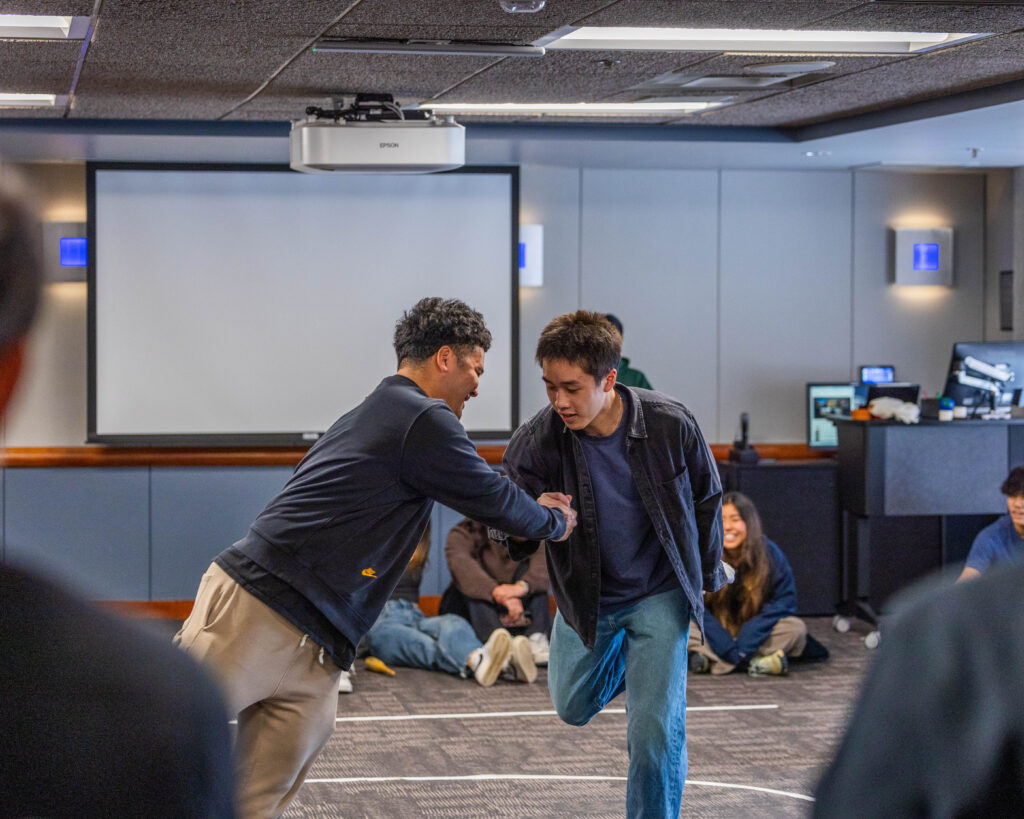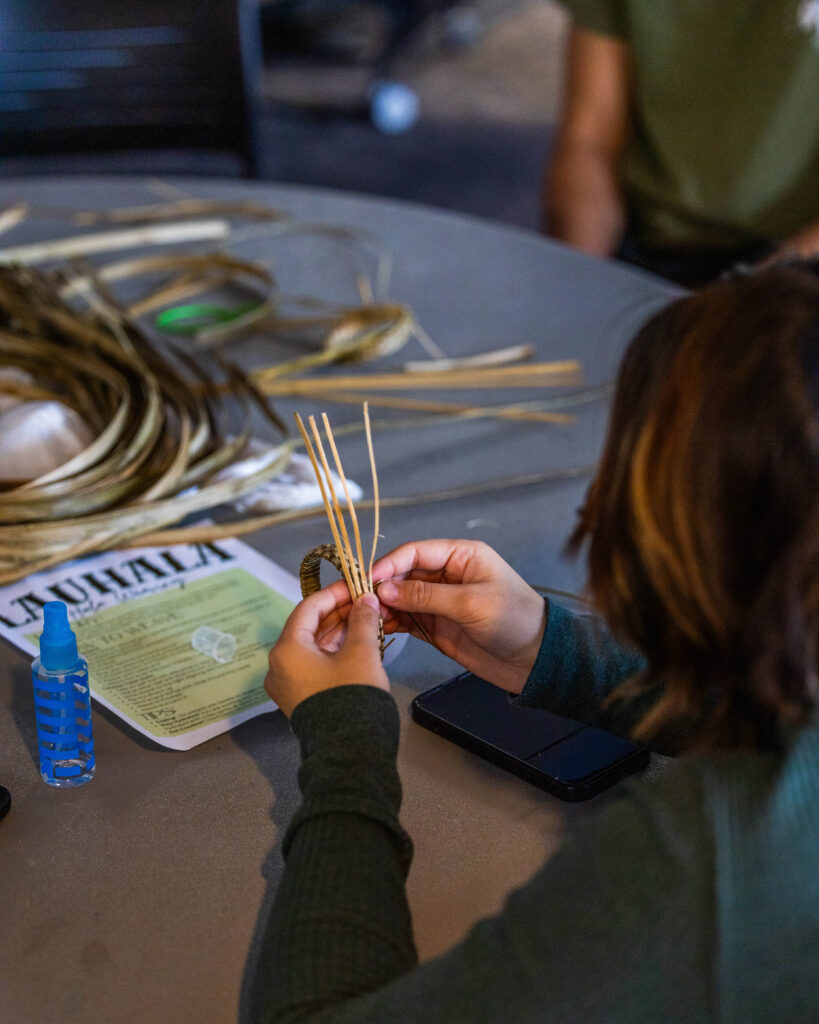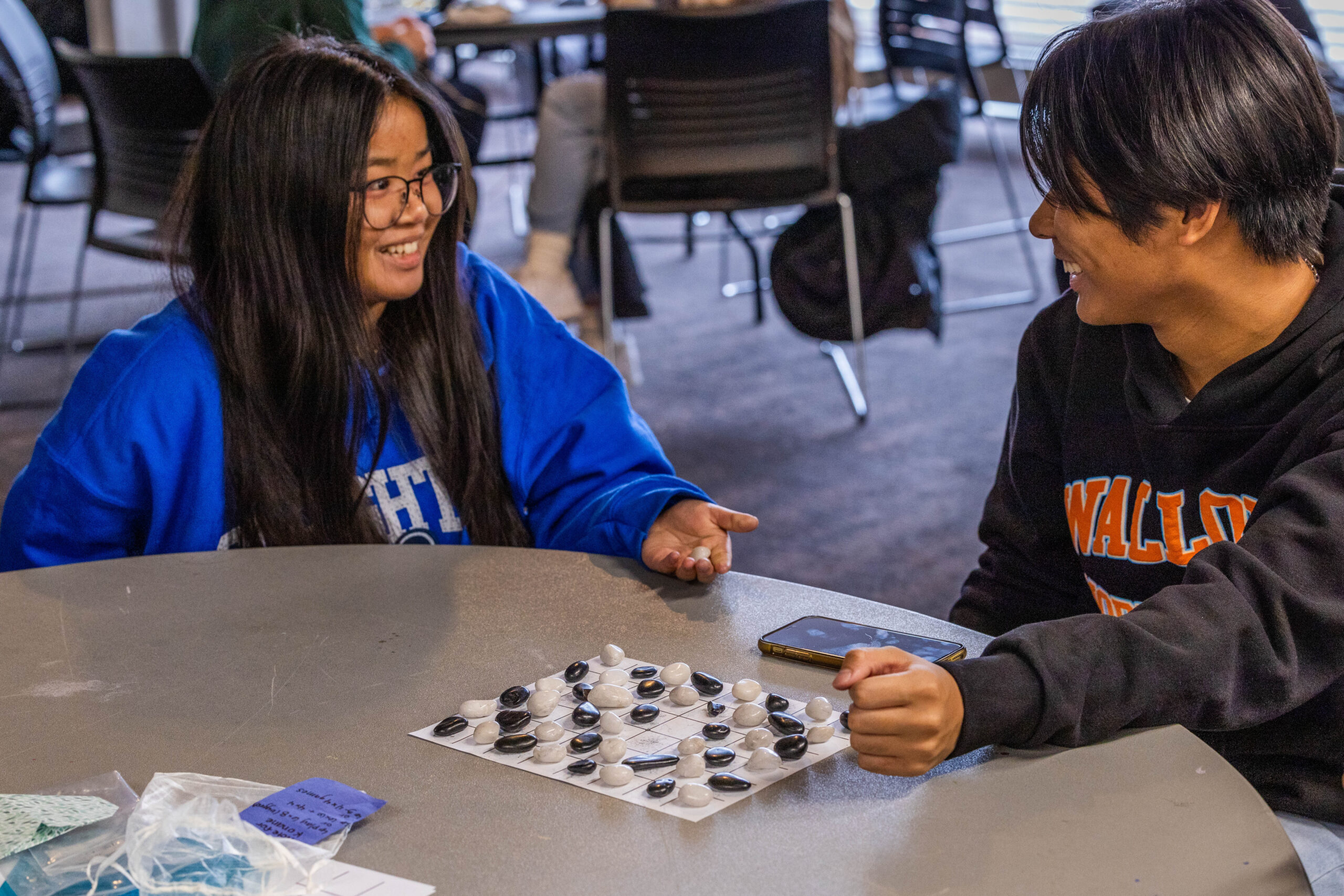Hui ’O Hawai’i hosted an afternoon of celebration of Hawaiian culture. Students were invited to participate in ancient Hawaiian cultural games and crafts to celebrate and educate participants about Makahiki, an ancient harvest festival.
In pre-colonial Hawai’i, Makahiki season lasted for months, celebrating the new year and a successful growing season with rest, dancing, feasting and athletic competitions. Today, people in Hawai’i celebrate with music, food and sporting events.
Last weekend, Creighton students had the opportunity to experience Makahiki on the mainland with games such as Moa Pahe’e, which involves sliding large darts through stakes in the ground; Konane, a Hawaiian version of checkers; and Uma, an arm-wrestling match with both players laying on the ground. There were also cultural crafts available to try, including ‘Ohe Kapala, a form of print making, and Lauhala bracelets, which are made with woven leaves of the lauhala tree.


According to Abby Maresh, associate director of admissions and Creighton’s primary recruiter for Hawai’i, the Hawaiian tradition at Creighton runs deep. The first student came from Hawai’i to Creighton in 1924, and the university has hosted at least one student from Hawai’i since then.
In the early 1940’s, Creighton saw a dramatic increase in the number of students coming from the islands. After Japan bombed Pearl Harbor in World War II, a wave of Japanese and Asian discrimination hit the United States, especially in the Western states. Universities stopped accepting Japanese- American students and students from Hawai’i.
After the war, the US government promised to pay for the higher education of former soldiers, a policy commonly called the G.I. Bill. Despite this, many universities across the country would not allow former American soldiers of Japanese or Pacific descent to use their G.I. Bill to pay for college, if they were admitted at all.
Creighton resisted the discriminatory trends of the time and continued to welcome students of Asian descent, notably, young students from Hawai’i.
“Creighton was one of, if not the, furthest west institution that would, number one, accept Japanese Americans at that time, [and] number two, allow them to use their G.I. Bill,” Maresh said.
Hawai’i’s relationship with Creighton has remained strong over the years, partly due to the stories shared by previous students upon returning to the islands, said Maresh.
“It’s a very small community when you treat people well. They tell their friends. When you don’t treat people well, they tell more of their friends, right?” Maresh said. “People share their stories. There’s a history of something called ‘talk story’ in Hawai’i, which is kind of sharing ideas, knowledge [and] experiences. And people talk about what they love, right? You often hear from your friends and family about colleges, so they share that.”
Each year, about 50 to 60 freshmen arrive at Creighton from Hawai’i. The students are welcomed by Hui ’O Hawaii club, which provides support to students from Hawai’i. The club was founded in 1948, which makes it older than the official U.S. statehood of Hawai’i itself.
The Makahiki celebration is just one of Hui ’O Hawaii’s traditions meant to ease the transition for incoming students. According to the club’s president, College of Arts and Sciences senior Jason Chong, Hui ’O Hawaii hosts about one event per week.
The biggest event of the year is the annual lu’au, which introduces over 1,000 people to food and dances from Hawai’i every year. It is the largest student-led event at Creighton.
Events like Makahiki give students from Hawai’i a chance to connect with their culture while at Creighton and gives other students the opportunity to experience Hawaiian traditions for the first time.
“Hawai’i Club does definitely give me a home away from home. And it’s given me a lot of … relationships and a lot of friendships,” Chong said.
Hui ’O Hawaii’s annual lu’au will take place on March 29. Tickets for the lu’au will be available for purchase in the coming weeks.
